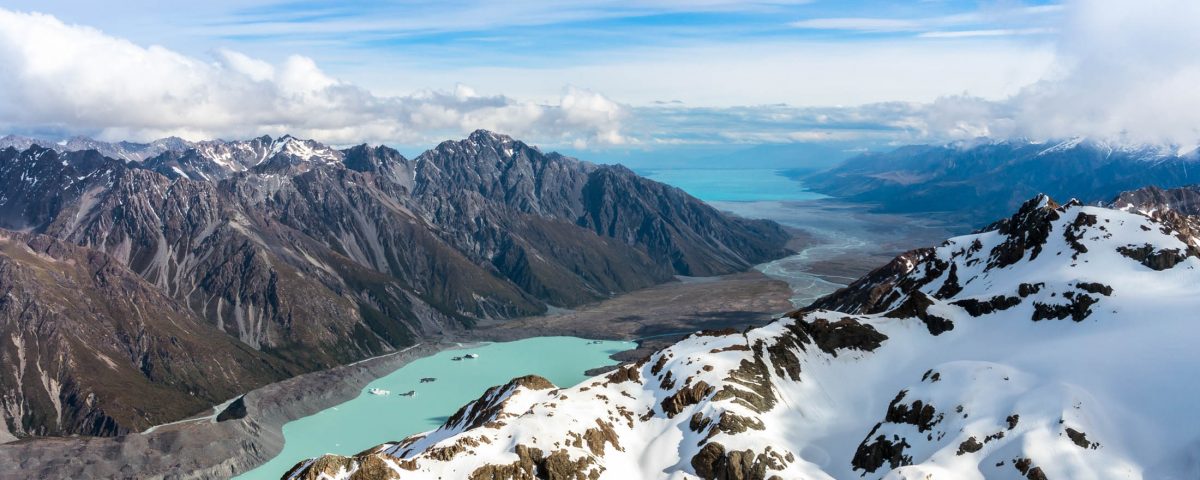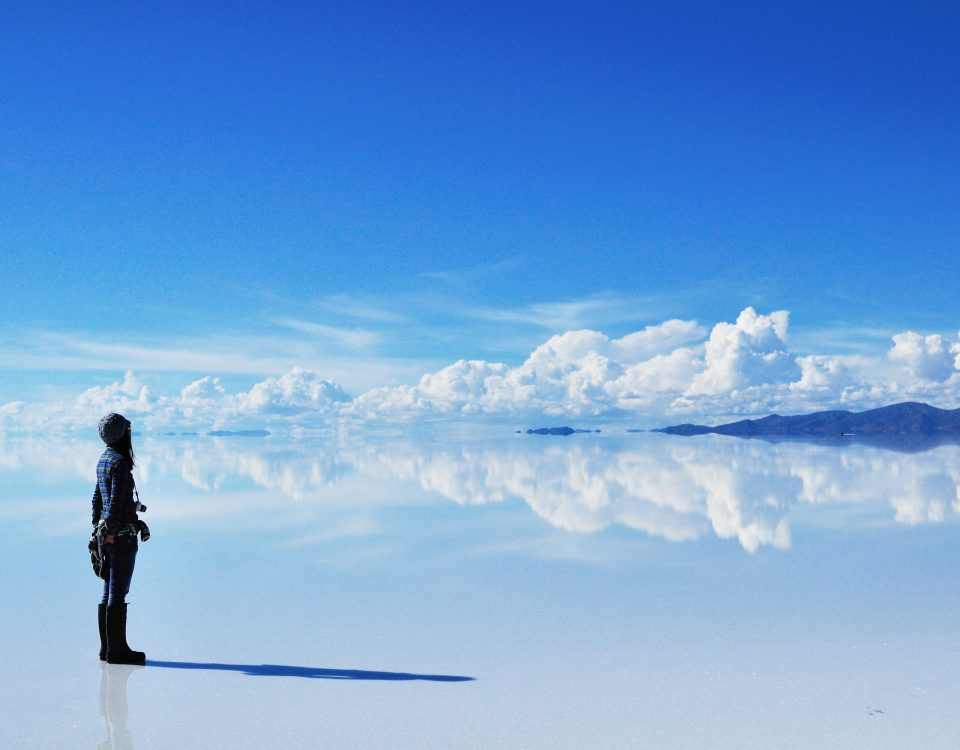
Essential Experiences of Emilia
February 7, 2020New Zealand’s Largest Glacier & Mt. Cook National Park
New Zealand’s largest glacier isn’t just for show and instead offers exclusive experiences blending exhilarating exploration and the dramatic scenery consisting of floating icebergs, jagged snow-capped peaks, and deep crevices splitting the glacier’s surface ice.
Glaciers cover more than 40 percent of Mount Cook National Park in the Southern Alps, including Mount Cook, the country’s tallest mountain. Sir Edmund Hillary, the first mountaineer to reach the summit of Mount Everest with his Sherpa guide Tenzing Norgay, practiced scaling the mountain by climbing the slopes and textured icecaps of Tasman Glacier before his ascent of Mount Everest in 1953. Literal metric tons of compacted snowfall formed the solid blue mass of ice between 16,000 and 22,000 years ago.
Today the glacier encompasses a length of 17 miles and width of two and a half miles for a total area enveloping nearly 40 square miles containing one-third of all of New Zealand’s glacial ice. Climate change poses the biggest threat to the glacier with scientists estimating the Tasman Glacier will lose up to three miles of its surface area by 2045. Since the 1990s, the glacier has retreated at an average rate of 590 feet per year dropping giant icebergs into the milky turquoise waters of Tasman Lake, a body of water that took shape in the late 20th century.
Scenic Hike of Tasman Lake and Around the Glacier
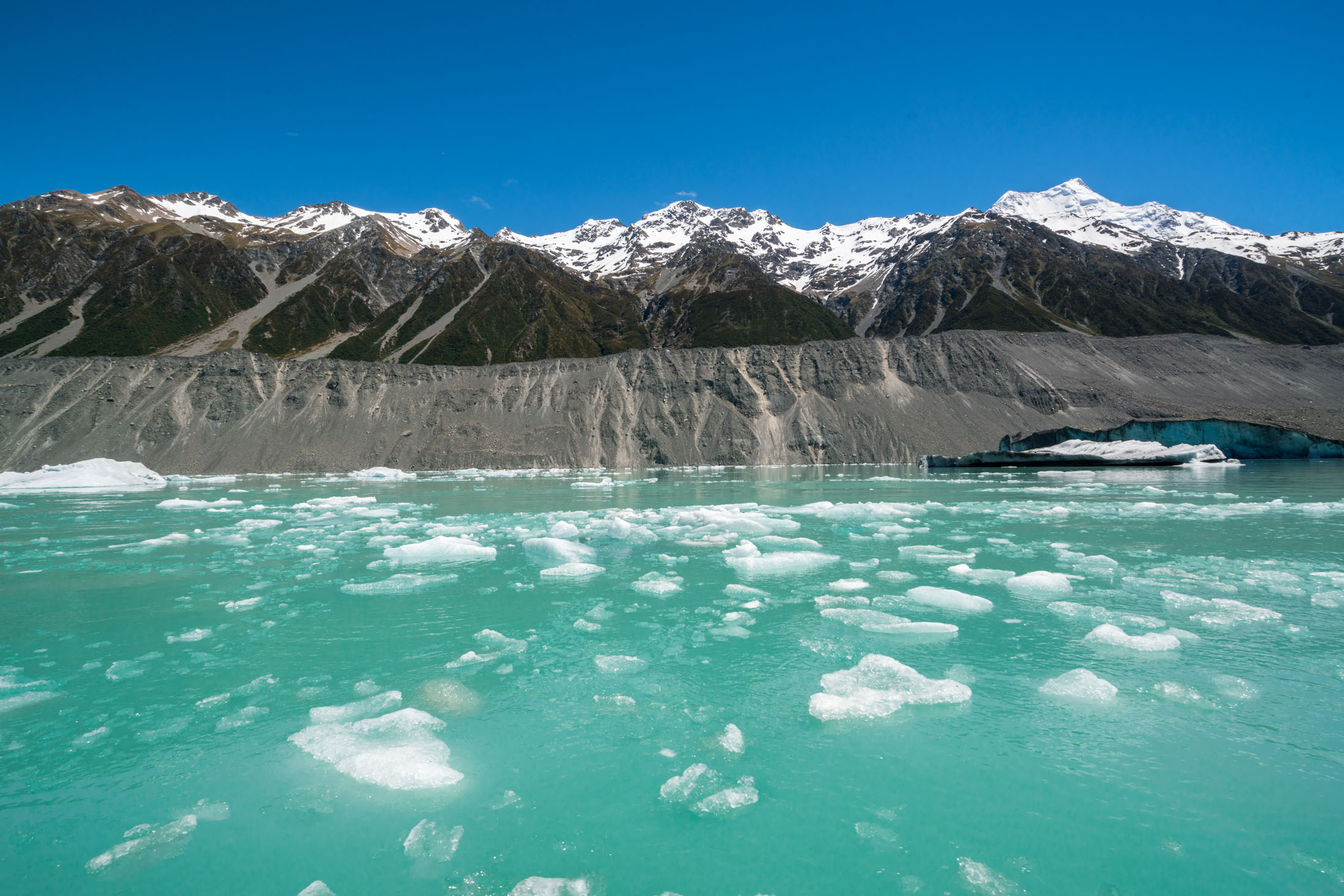
Only experienced mountaineers can trek over the mountain peaks and through the elevated passes to hike the icy surface of Tasman Glacier without a guide or flight support. For a more casual view of the glacier without the extreme conditions on the slippery surface, you can stroll around Tasman Valley combining the Blue Lakes via the Hooker Valley Track. The trail takes you over a mile for fantastic views of the milky-blue waters of Tasman Lake sitting below the rocky moraine climbing the peaks of the Southern Alps. In the mid- to late- 19th century, the turquoise meltwater from the glacier-fed the Blue Lakes. Since receding, the meltwater from Tasman glacier no longer feeds into the lakes, which now contain a distinctive green hue from algae mixing with the ancient glacial water. The climactic viewpoint on the trail overlooks Tasman Lake, the long flatlands of Tasman Valley, and a stunning collection of floating icebergs. The hiking trail requires minimal effort but rewards you with a fabulous panorama, including the labyrinth of icebergs floating emerging from the surface of Tasman Lake.
More enthusiastic hikers can follow the Ball Hut Route for a full day or overnight trek with the best views of the Tasman Glacier you will get while on foot. The route gets you closer to the glaciers sprawling over the rugged landscape and reflecting on the surface of the Blue Lake. The Ball Hut Route also offers the opportunity of coming into contact with a kea, the world’s only alpine parrot. The rare kea is known for being loud and curious layering the majesty of the landscape with the thrill of interacting with New Zealand’s extraordinary wildlife in their natural habitat.
Kayaking
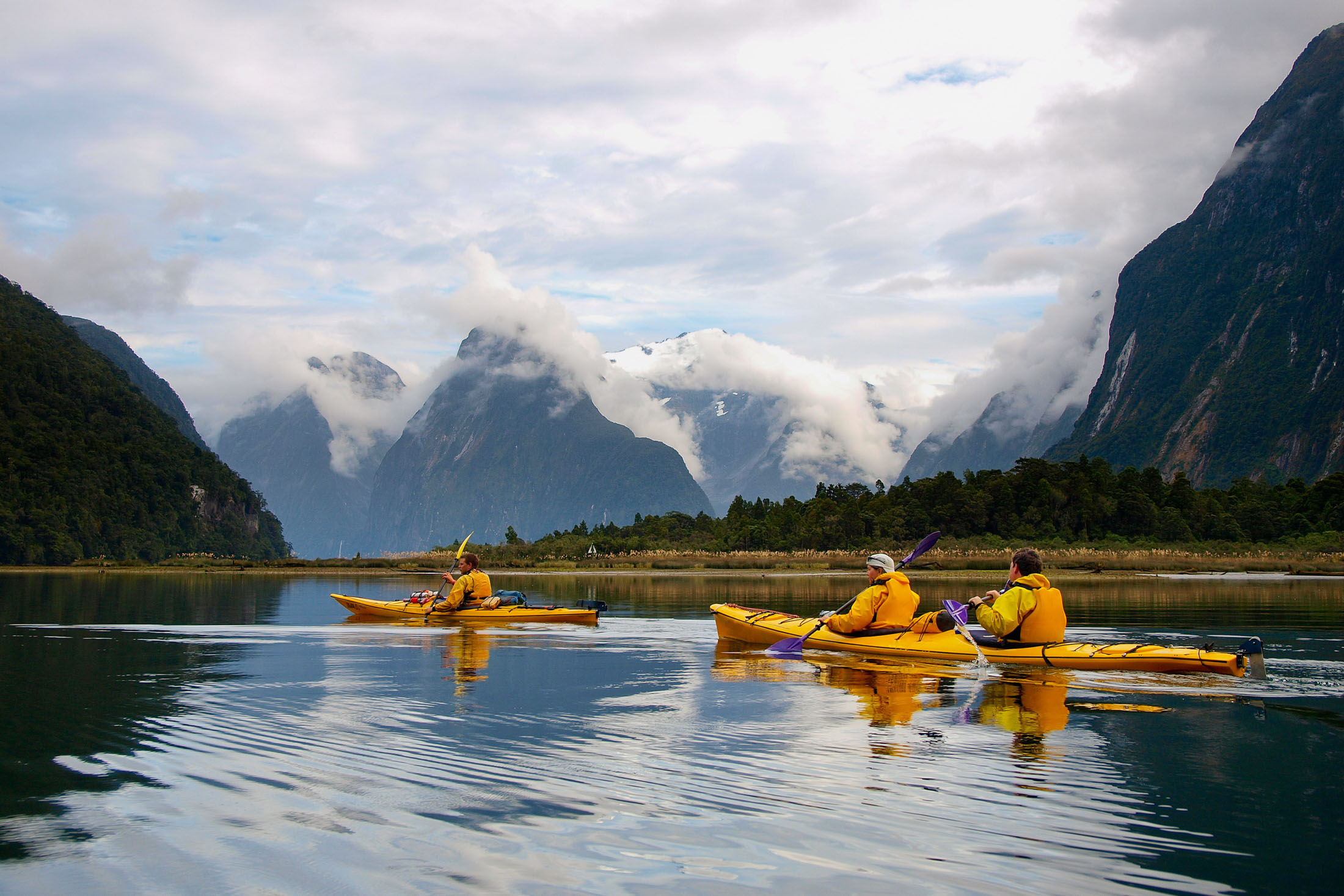
Active travelers who prefer a stunning view of a landmark more than standing on the landmark itself favor kayaking as their adventure of choice. Guided tours lead you onto glowing waters of Lake Tasman. Conditions vary based upon the season and shifts in the weather. Experts or novice kayakers will enjoy floating along the frigid waters past staggering icebergs surrounded by the ascending peaks of the glaciated mountains. You will kayak close by the ice wall while remaining at a safe distance in the event of a calving iceberg. Should any ice break away from the glacier wall, you will have an incredible view. In February 2011, the Christchurch earthquake caused a chunk of ice weighing 30 million tons and measuring over a half-mile long to tear away from the wall causing waves more than 10 feet tall.
Scenic Flights and Snow Landings
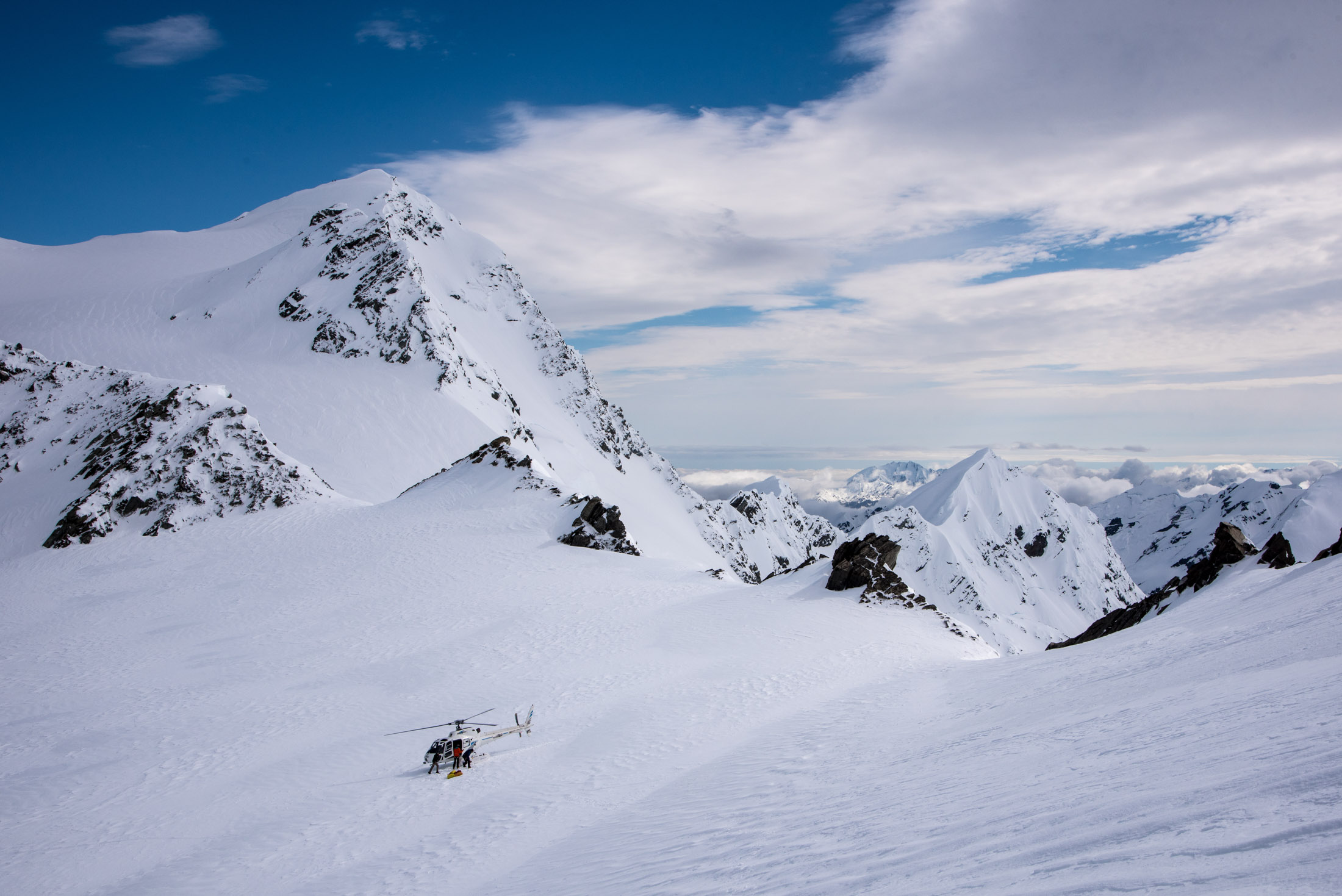
The gorgeous landscapes of turquoise lakes, rolling coastal waves, scattered mountain peaks, and magnificent geothermal activity has made New Zealand a prime destination for scenic flights. While in the air, you have a spectacular panoramic view of the vast scenery punctuated by the peaks of Mount Cook and Mount Tasman. The aerial view puts the scope of the glacier into perspective with surprising, sporadic views of the west coast. Ski planes circle Mount Cook at the center of the national park bordered to the east by Tasman Glacier and the South Island’s shoreline to the west.
A helicopter ride can take you higher in altitude and closer to Mount Cook’s peak at 12,350 feet above sea level. The ride provides sensational views of more than just the glacier, encompassing the upper snowfields, the Grand Plateau, Plateau Hut, and Hochstetter Icefall, the latter of which resembles a waterfall of loose ice frozen in place along the steep edges of the glacier.
Heli Hike Tasman Glacier
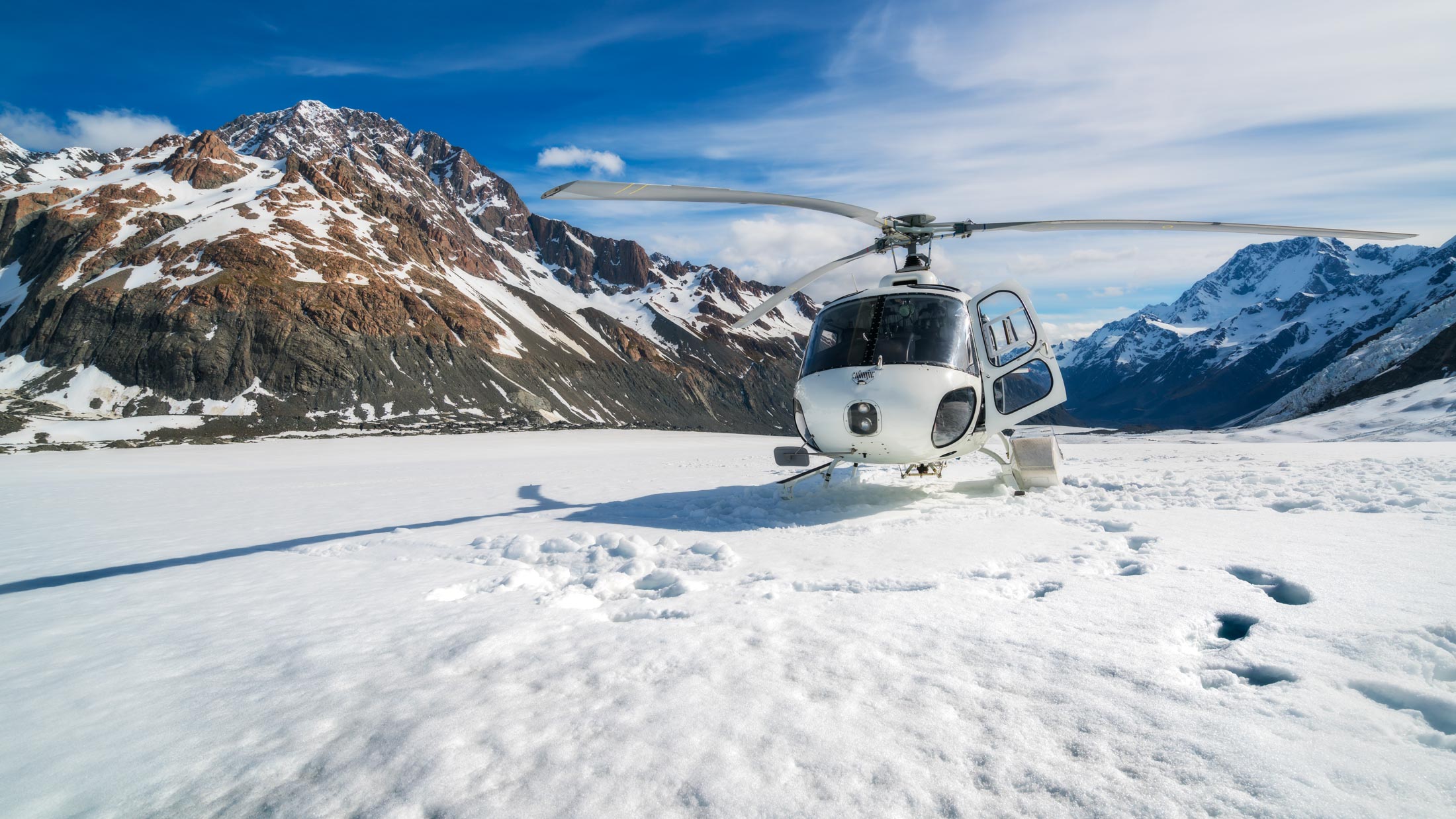
The most thorough way to experience the Tasman Glacier and Mount Cook National Park is on a heli hike. Unless you have a history of hardcore mountaineering, a heli hike excursion is the only way to get onto ice itself by combining a scenic flight with the thrill of exploring the white ice running alongside New Zealand’s largest mountain. Strap on sturdy boots and crampons after landing in a remote area of the glacier known for meandering crevices, slippery slopes, and hidden ice caves. The walking tour lasts about two hours and travels over the constantly changing environment of the glacier making every visit unique.
While the surface of the glacier looks smooth and level from the air, the glacier is in fact nearly 2,000 feet thick. Your guide leads you into the fissures, sinkholes, and tunnels shaped by meltwater over the years forming contours reminiscent of canyons lined with ice walls and secluded shafts resembling waves frozen in bright indigo and azure colors. Duck into caves decorated with icicles resembling stalactites and stalagmites offering ample opportunities for unparalleled photos.
If you prefer a more audacious thrill when on the glacier, you can ski at the heart of the Southern Alps on a variety of runs with slopes descending nearly 3,300 feet. The icy surface takes on a new, fascinating connotation as you carve the landscape between towering peaks leaving a wave of tracks in the soft, natural powder lined with hidden icy pinnacles or ridges. Heli skiing takes place in winter after a fresh snowfall and should only be pursued if you are an intermediate, advanced, or expert skier.


